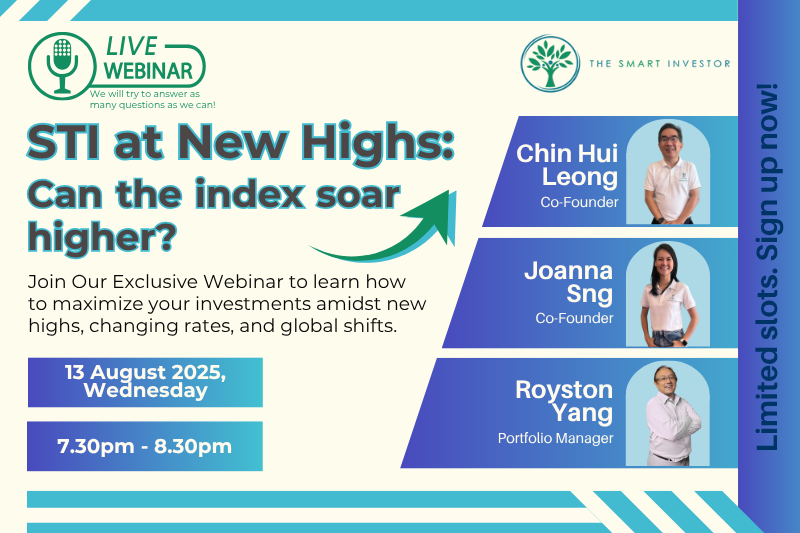While Singapore’s blue-chip giants grab the headlines, a quiet revolution is happening one tier below.
The newly launched iEdge Singapore Next 50 indices have returned a little more than 20% as of the end of August, outpacing the Straits Times Index‘s (SGX: ^STI) 17.4% gain.
And investors are starting to take notice.
Government’s Vision for Market Development
Just ten days before SGX launched these indices, Mr Chee Hong Tat, Minister for National Development and Deputy Chairman of the Monetary Authority of Singapore, laid out the strategic importance of these new benchmarks.
“Indices are useful tools in this regard, as they create visibility, and can also help to track performance of different industry or market segments,” he noted.
The Minister highlighted that “the STI represents only a portion of our listed companies, and investor interest in the next tier is growing.”
This growing interest isn’t accidental – it’s been cultivated through deliberate policy measures including the S$5 billion Equity Market Development Programme (EQDP) announced earlier this year.
Understanding the iEdge Singapore Next 50 Index
The iEdge Singapore Next 50 Indices track the next 50 largest companies on SGX Mainboard after excluding the top 30 by market capitalisation – ensuring no overlap with STI constituents.
Key Selection Criteria
- Minimum size: S$100 million market capitalisation
- Free-float adjusted: Only publicly tradeable shares count towards market cap
- Liquidity test: Six-month median daily trading value assessed at quarterly reviews
- 5% cap per stock: No single company can dominate the index
- Eligible securities: Only ordinary shares qualify, not preference shares
The suite comprises two indices: the iEdge Singapore Next 50 Index, which is weighted by market capitalisation to reflect the relative size of each constituent, and the iEdge Singapore Next 50 Liquidity Weighted Index, which is weighted by turnover to capture the relative liquidity of the constituents.
The Heavy Hitters at 5%
Six companies command the maximum 5% weighting in the iEdge Singapore Next 50 market cap-weighted index, namely Netlink NBN Trust (SGX: CJLU), YangZiJiang Financial Holdings (SGX: YF8), Suntec Real Estate Investment Trust (SGX: T82U), Keppel REIT (SGX: K71U), ComfortDelGro Corporation Ltd (SGX: C52), and CapitaLand Ascott Trust (SGX: HMN) or CLAS.
The first four companies should come as no surprise as the quartet are on the STI reserve list — think of them as the benchwarmers ready to step up if any STI constituent steps down.
This diverse group tells the story of Singapore’s evolving economy.
ComfortDelGro represents the transport sector’s transformation. NetLink Trust owns the critical fibre infrastructure powering Singapore’s digital economy.
Meanwhile, Suntec REIT, Keppel REIT, and CLAS showcase the city state’s diverse properties from shopping malls and commercial buildings to hotels and service apartments.
In terms of market cap, Suntec REIT and Olam Group (SGX: VC2) stand above the rest, valued at S$3.9 billion each, representing the largest companies in the mix.
Next, for the iEdge Singapore Next 50 Liquidity Weighted Index, there are four main companies with the maximum 5% weighting.
They are YangZiJiang Financial Holdings (SGX: YF8), ComfortDelGro Corporation Ltd (SGX: C52), iFAST Corporation (SGX: AIY), and recent IPO debutant NTT DC REIT (SGX: NTDU).
The inclusion of wealth platform iFAST and data centre REIT NTT is another nod to the technology sector and new economy assets.
Who could make it into the indices next?
Like the STI, the two indices also have their own reserve list with the trio of Banyan Tree Holdings Limited (SGX: B58), AEM Holdings Ltd (SGX: AWX), and Q&M Dental Group (SGX: QC7), at the forefront, vying to be part of the next 50 list in the future.
Get Smart: Income for the future?
Like the STI, we should expect dividends to play a big role in the future returns of the two indices.
Why?
For context, the iEdge Singapore Next 50 index offered a 5.85% trailing dividend yield (as of end of August 2025) while the iEdge Singapore Next 50 Liquidity Weighted index offered a 5.44% trailing dividend yield.
In comparison, the STI currently offers a 4.1% yield.
Hence, the two new indices may attract income hungry investors to take a look.
At the moment, there aren’t any exchange-traded funds (ETFs) which track the indices but given the initiatives in place, we could see an ETF provider soon step up to the plate.
If you want to retire with a constant stream of dividends, these 5 stocks might be all you need. We’ve found 5 SG stocks that have kept paying (and growing) through inflation, rate hikes, and recessions. See what they are with our latest free report for SGX dividend investors. Click here to get instant access.
Follow us on Facebook, Instagram and Telegram for the latest investing news and analyses!
Disclosure: Chin Hui Leong owns shares of AEM, iFAST, Q&M Dental, and Suntec REIT.





